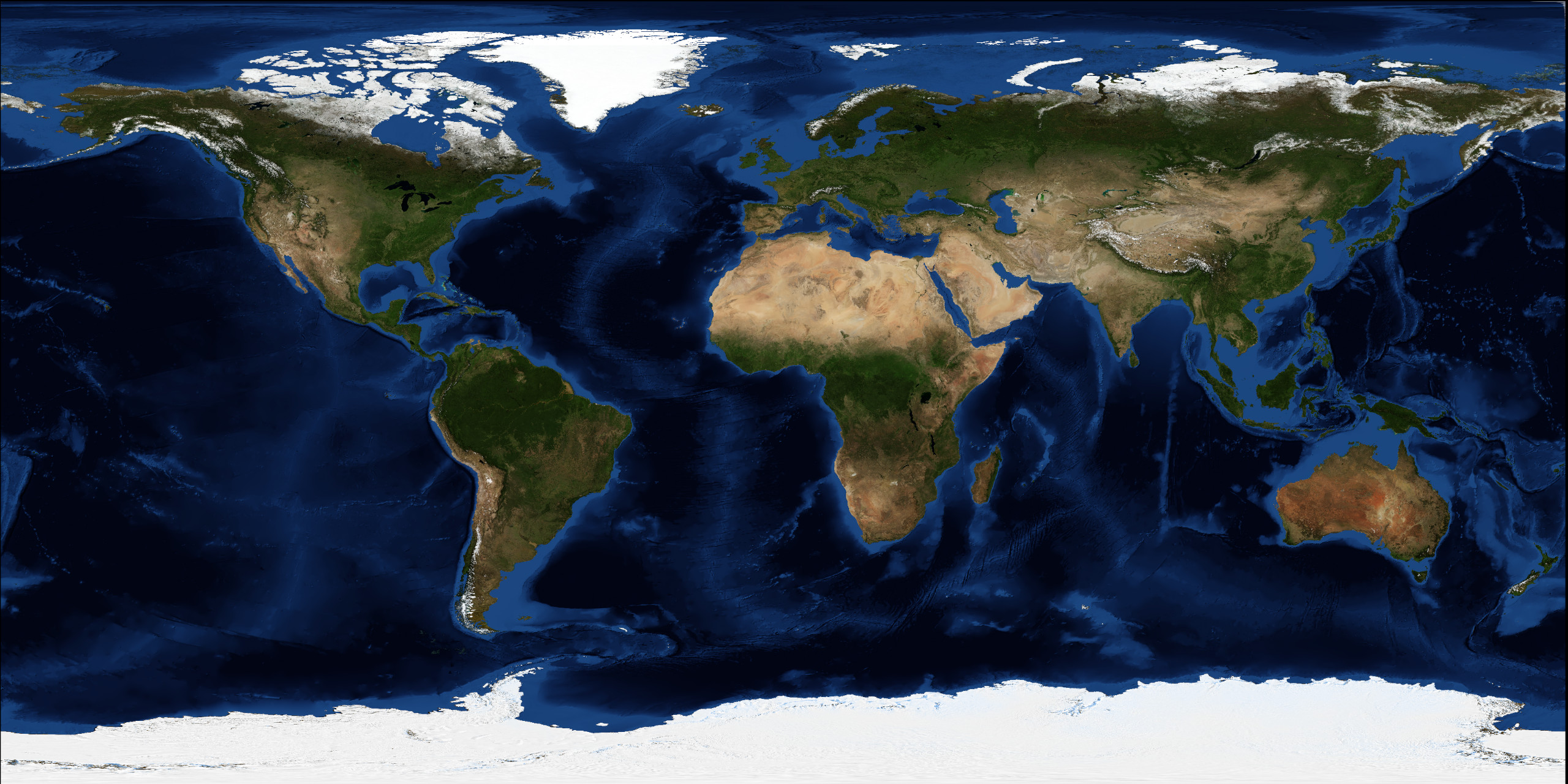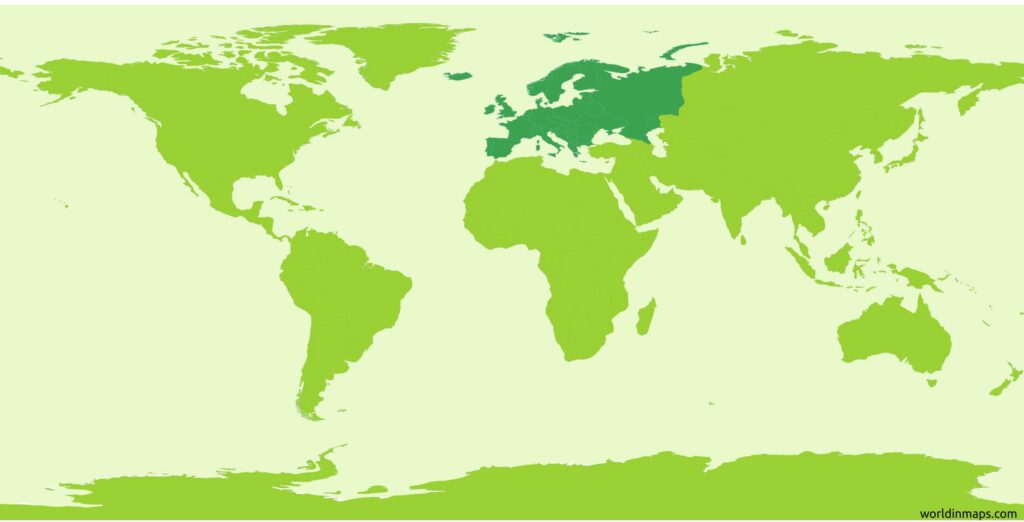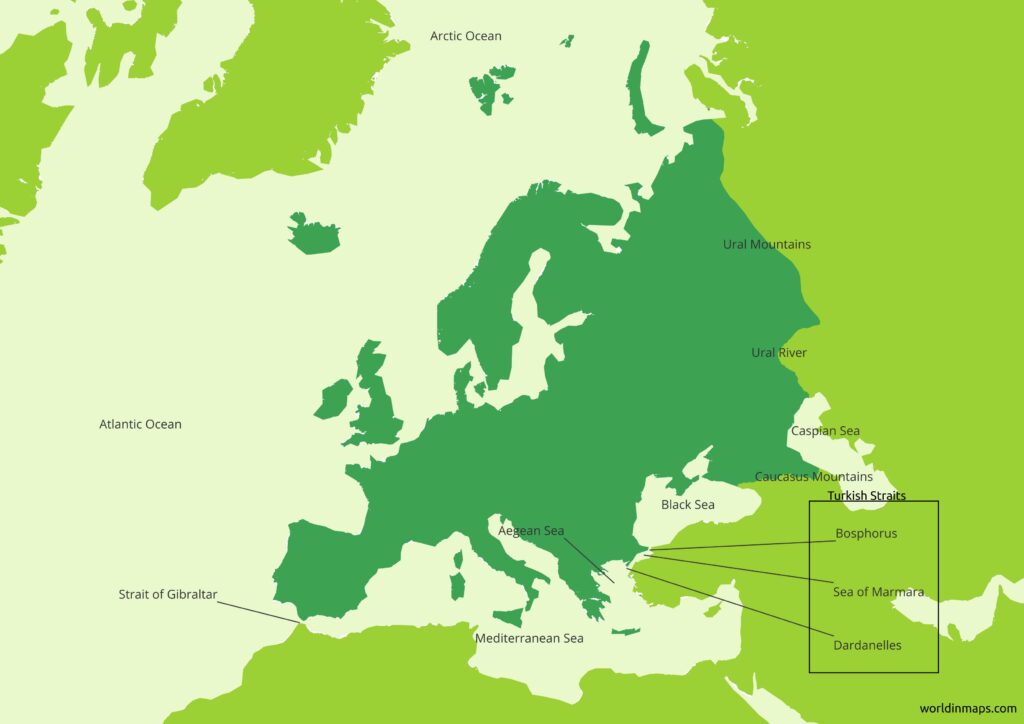
Continents / Europe / Geography
Where is Europe located on the world map?

Europe is located in the westernmost part of the Eurasian plate and it is traditionally considered as one of the seven continents.

It is bordered by the Arctic Ocean to the north, the Atlantic Ocean to the west, the Gibraltar Strait, the Mediterranean Sea, the Aegean Sea, the Dardanelles Strait, the Sea of Marmara and the Bosphorus Strait to the south. The eastern boundaries with Asia are less defined, because of the lack of real natural boundaries. The current definition of the boundaries is the one wished by Peter the Great that was willing to reoriented Russia into Europe by building Saint-Petersbourg on the Baltic Sea and by moving the boundaries of Europe to the east.
This border between Europe and Asia is considered to be the watershed of the Ural Mountains, the Ural River, the Caspian Sea, the Greater Caucasus, the Black Sea and the Turkish Straits.